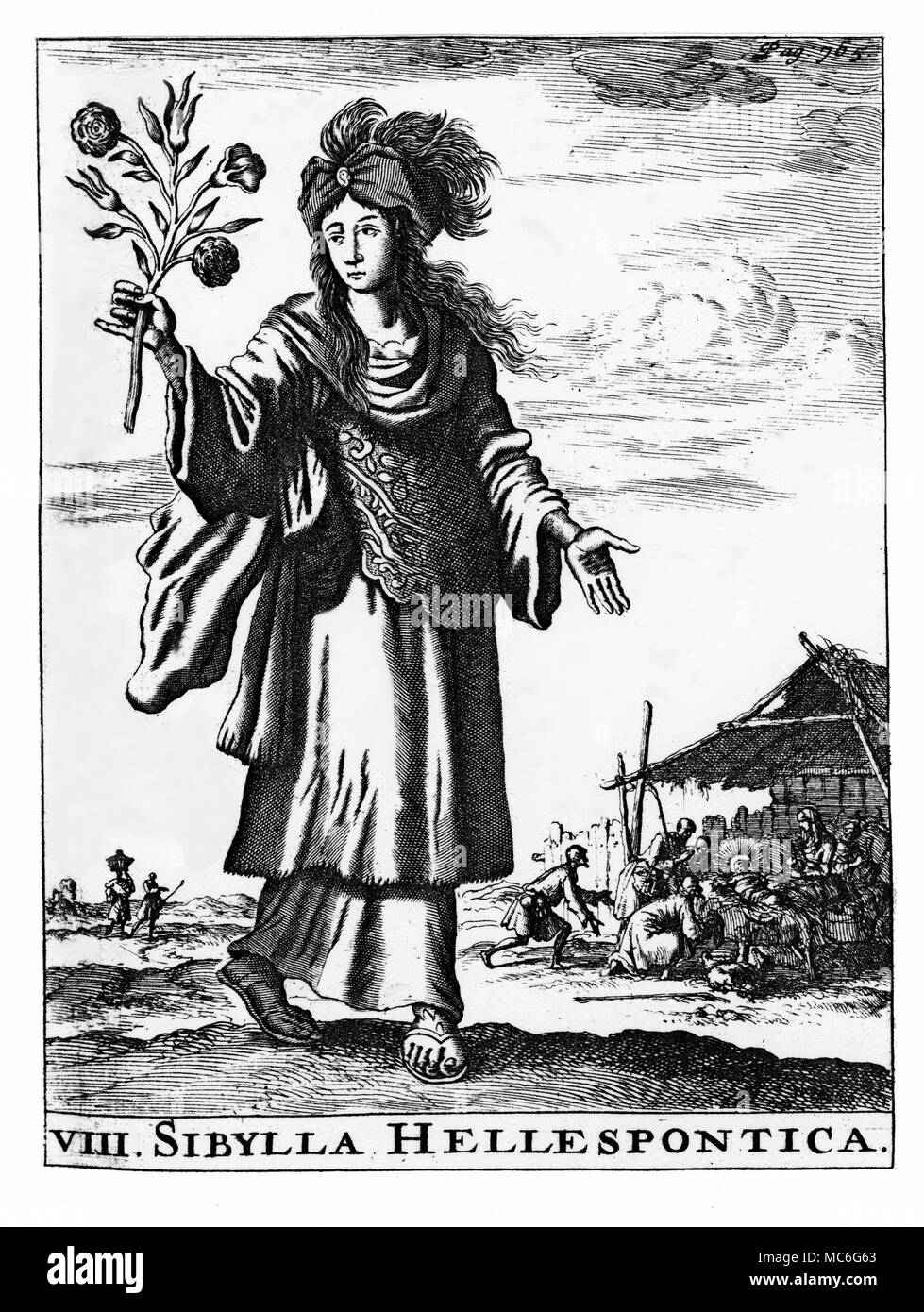PREDICTIONS - SIBYLS - SIBYL OF THE HELLESPONT The Sibylline Oracles are one of the great curiosities of the ancient world. Certain women, initiated in the Mystery Schools, developed the power to predict the future. Many of the 'oracles' delivered by the Sibyls were written down, in Greek hexametric verse, and preserved as sacred literature in a special priestly college. The Cumean sibyl's utterances were written on palm leaves. The oldest Sibyl is that of Erythraea, in Asia Minor - her prophecies dealt with the story of Helen and the Trojan War. The ancient school of Sibylline prophecy c

Image details
Contributor:
Charles Walker Collection / Alamy Stock PhotoImage ID:
MC6G63File size:
34.7 MB (2.7 MB Compressed download)Releases:
Model - no | Property - noDo I need a release?Dimensions:
3023 x 4013 px | 25.6 x 34 cm | 10.1 x 13.4 inches | 300dpiDate taken:
13 April 2018Photographer:
Charles Walker CollectionMore information:
This image could have imperfections as it’s either historical or reportage.
PREDICTIONS - SIBYLS - SIBYL OF THE HELLESPONT The Sibylline Oracles are one of the great curiosities of the ancient world. Certain women, initiated in the Mystery Schools, developed the power to predict the future. Many of the 'oracles' delivered by the Sibyls were written down, in Greek hexametric verse, and preserved as sacred literature in a special priestly college. The Cumean sibyl's utterances were written on palm leaves. The oldest Sibyl is that of Erythraea, in Asia Minor - her prophecies dealt with the story of Helen and the Trojan War. The ancient school of Sibylline prophecy came to an end in the fourth century AD, when surviving official oracles were burned by Flavius Stilicho. However, the tradition continued afresh, in the pseudo-Christian literature. A collection of Greek texts, in eight books, and relating to Christ, appears to have been compiled in the 2nd century AD, and is now known as the Oracula Sibylina. In fact, the Sibyls in this present collection are those whose prophecies were reinterpreted - or even invented - by Christian apologists, who forged literature claiming to come from the utterances of no fewer than twelve Sibyls. Allegedly, each had something to say about the coming of Christ, and His importance in History. The eighth book of the Sibylline collection is unashamedly Christian in content, and contains the famous acrostic on the name of IXTHYS. From this mediaeval tradition, each Sibyl was accorded a distinctive symbol and an identifying emblem. The Sibyl of Hellespont usually had a T cross as emblem, but here she carries a triple Rose, suggesting that the engraver, or author, had some connexion with Rosicrucianism. Her famous prediction was that Jesus Christ would suffer shame upon the Cross. However, in this image, it is the birth of Jesus which occupies the middle distance. Engraving from the Amsterdam 1685 edition of Spiegel der Sibyllen.